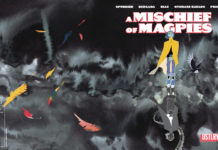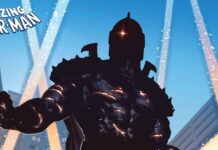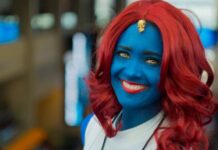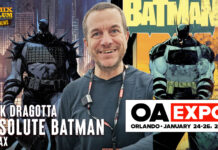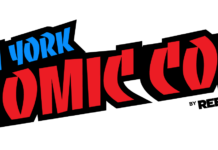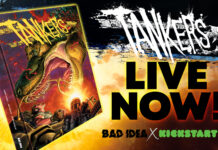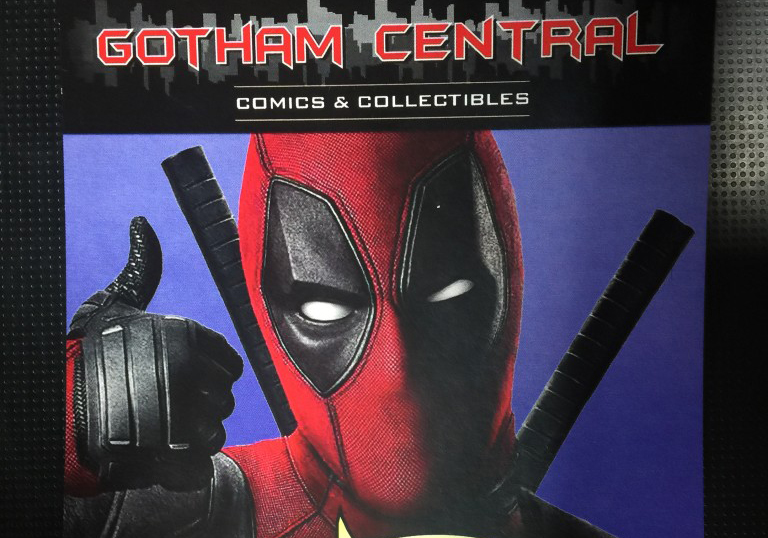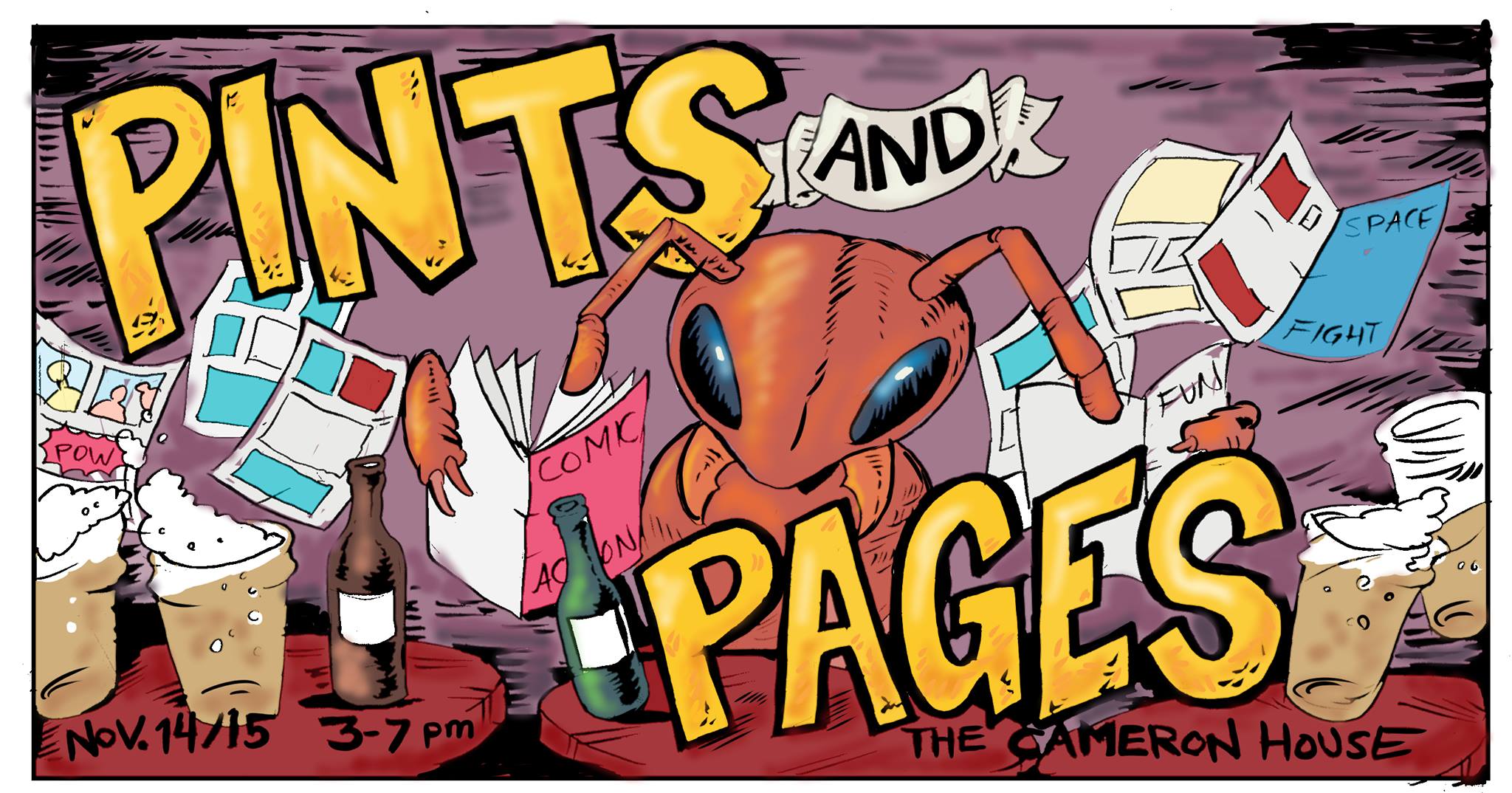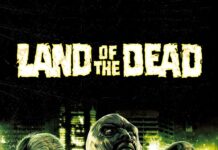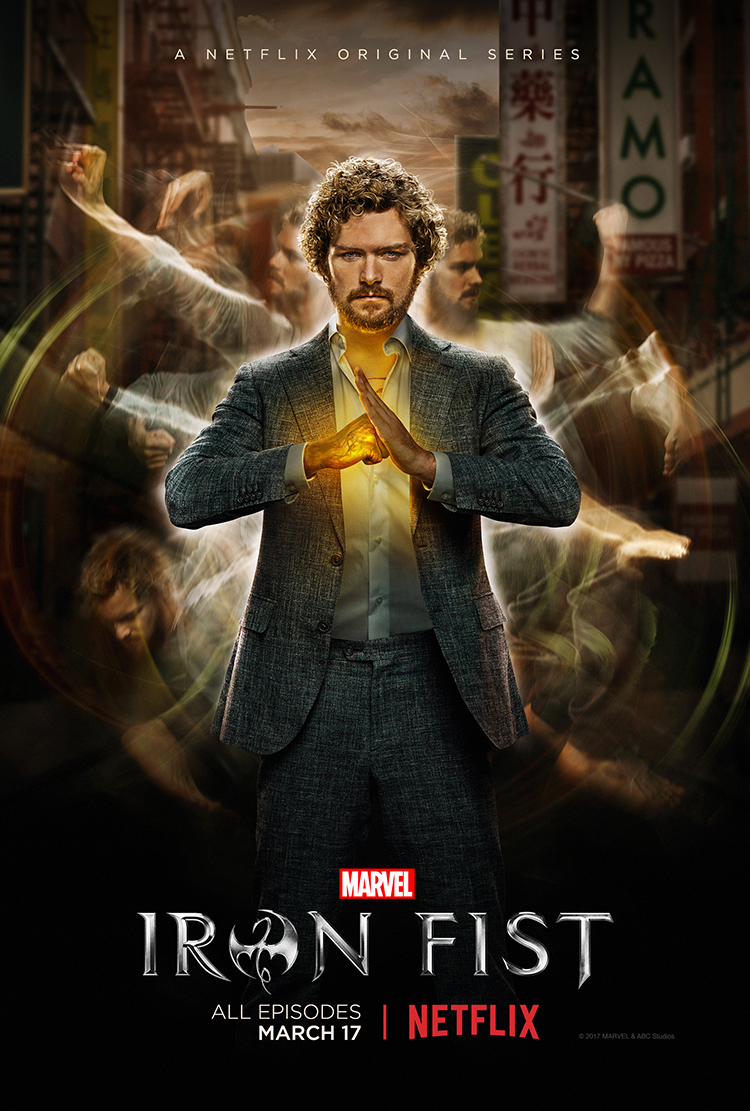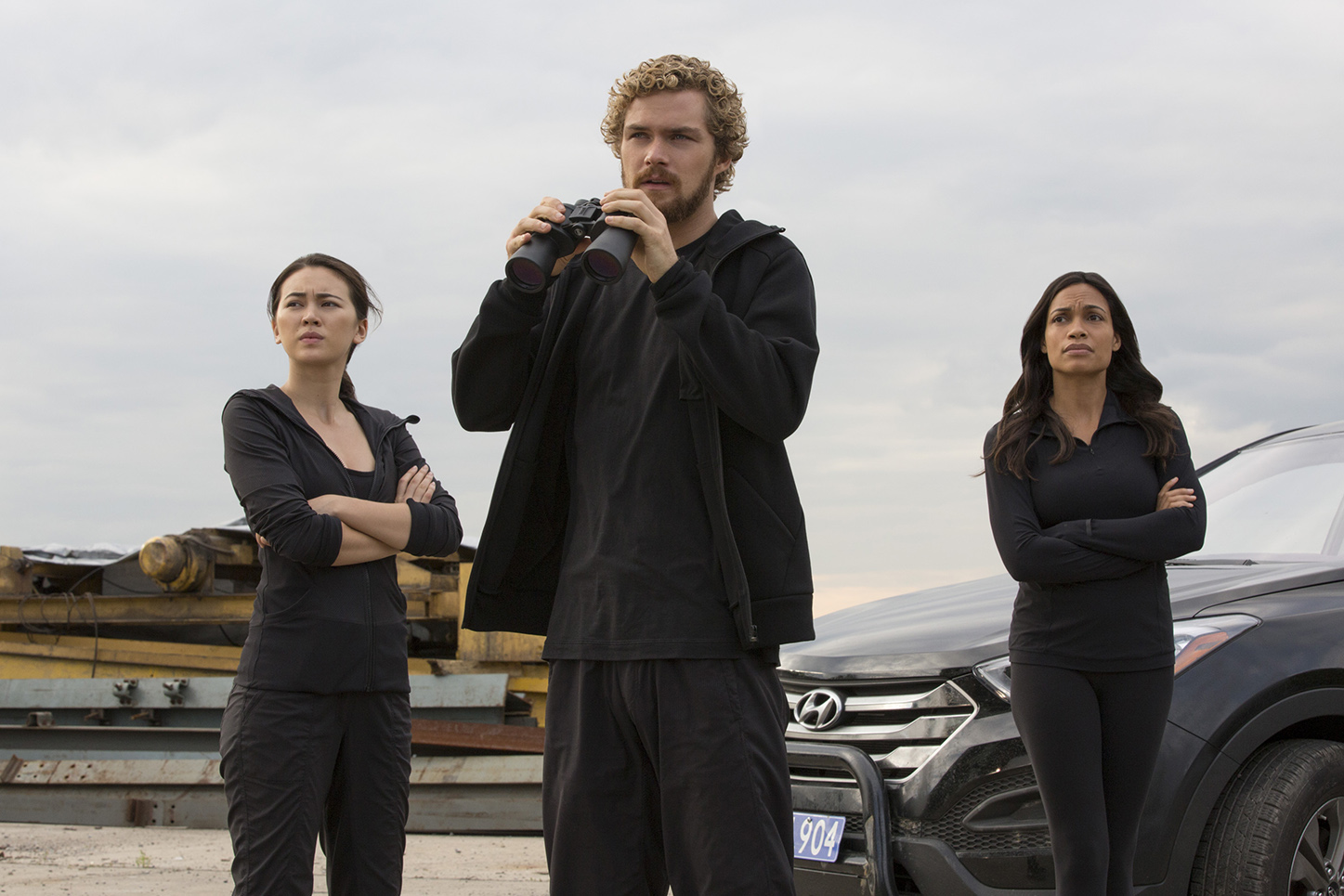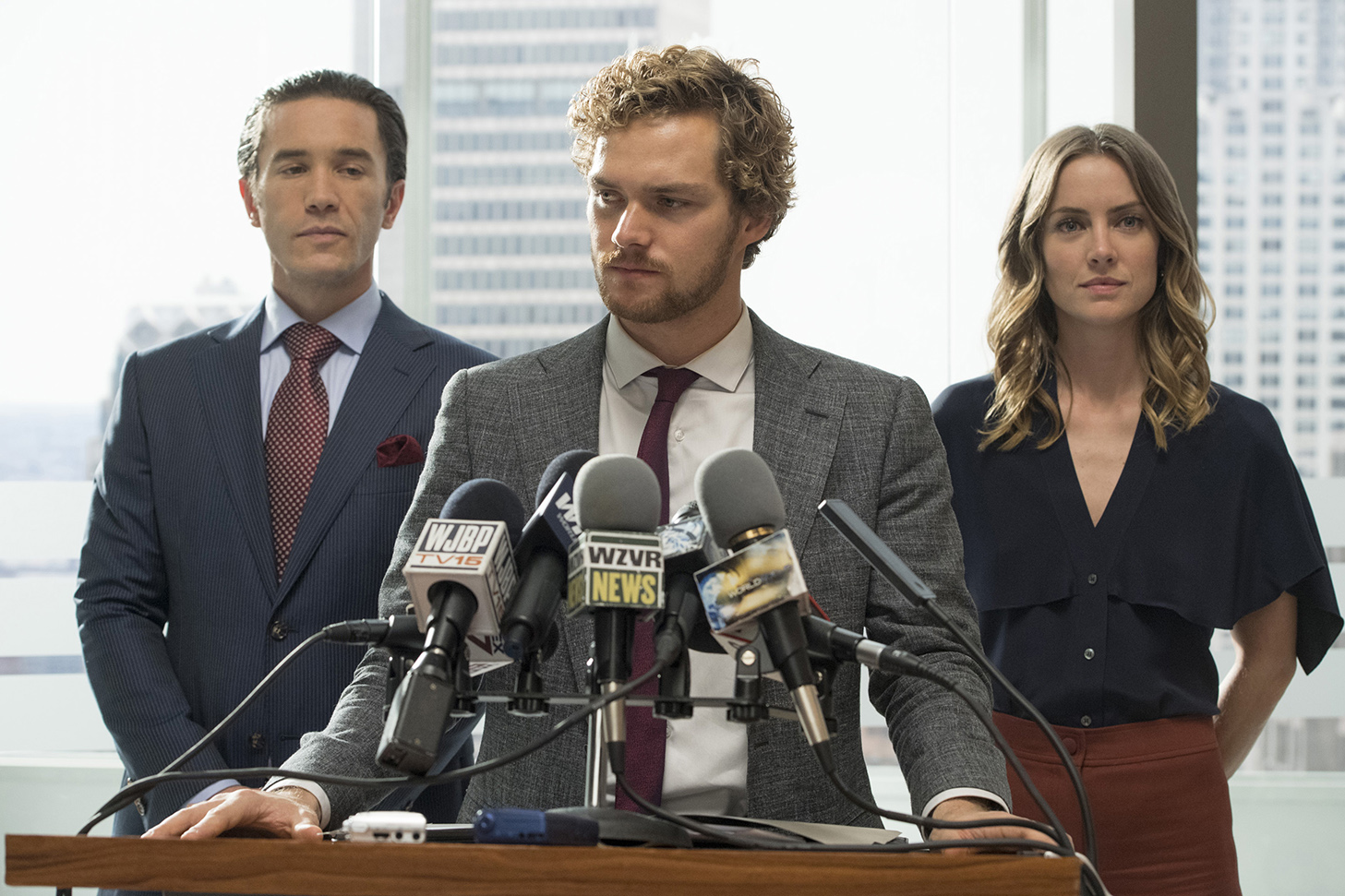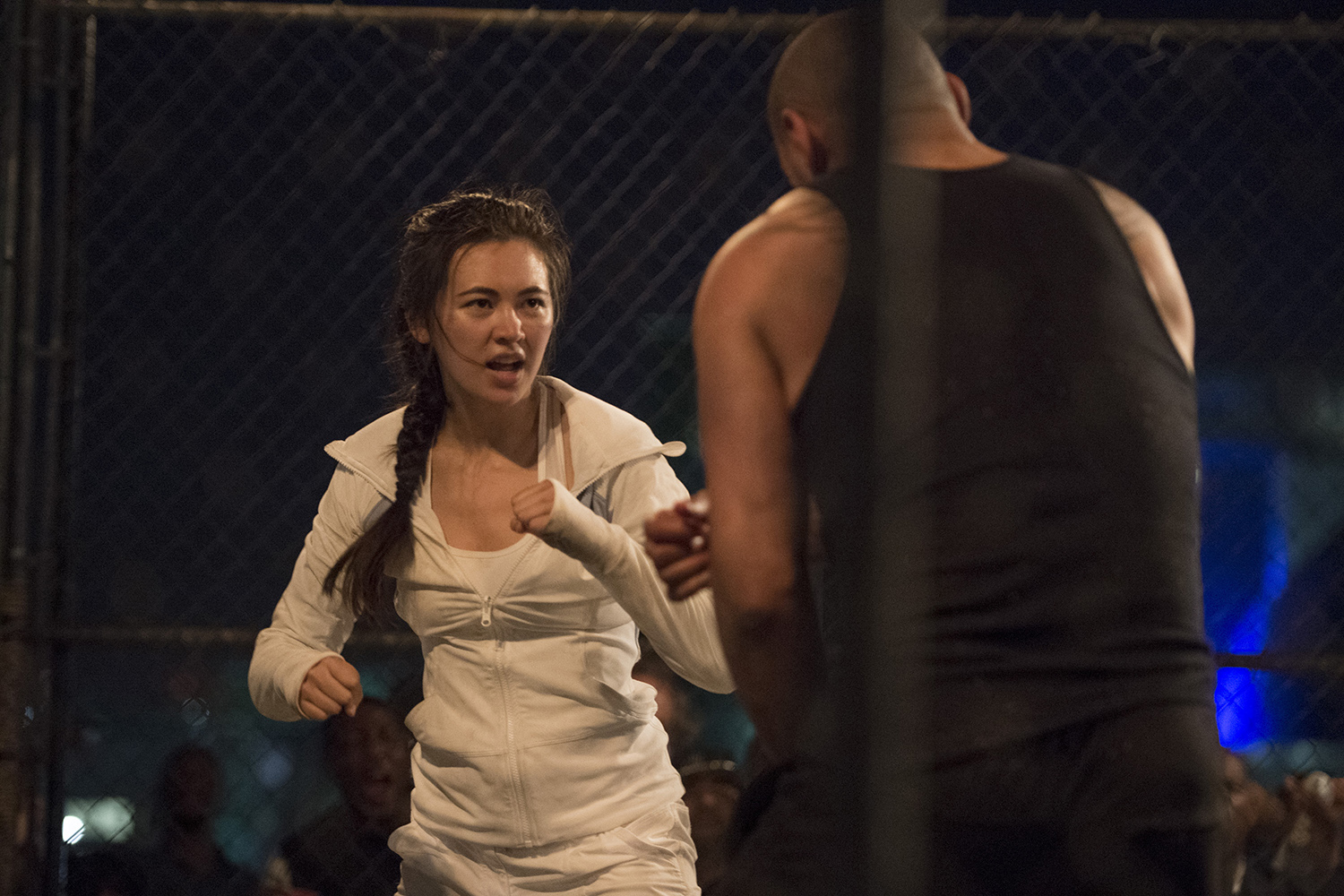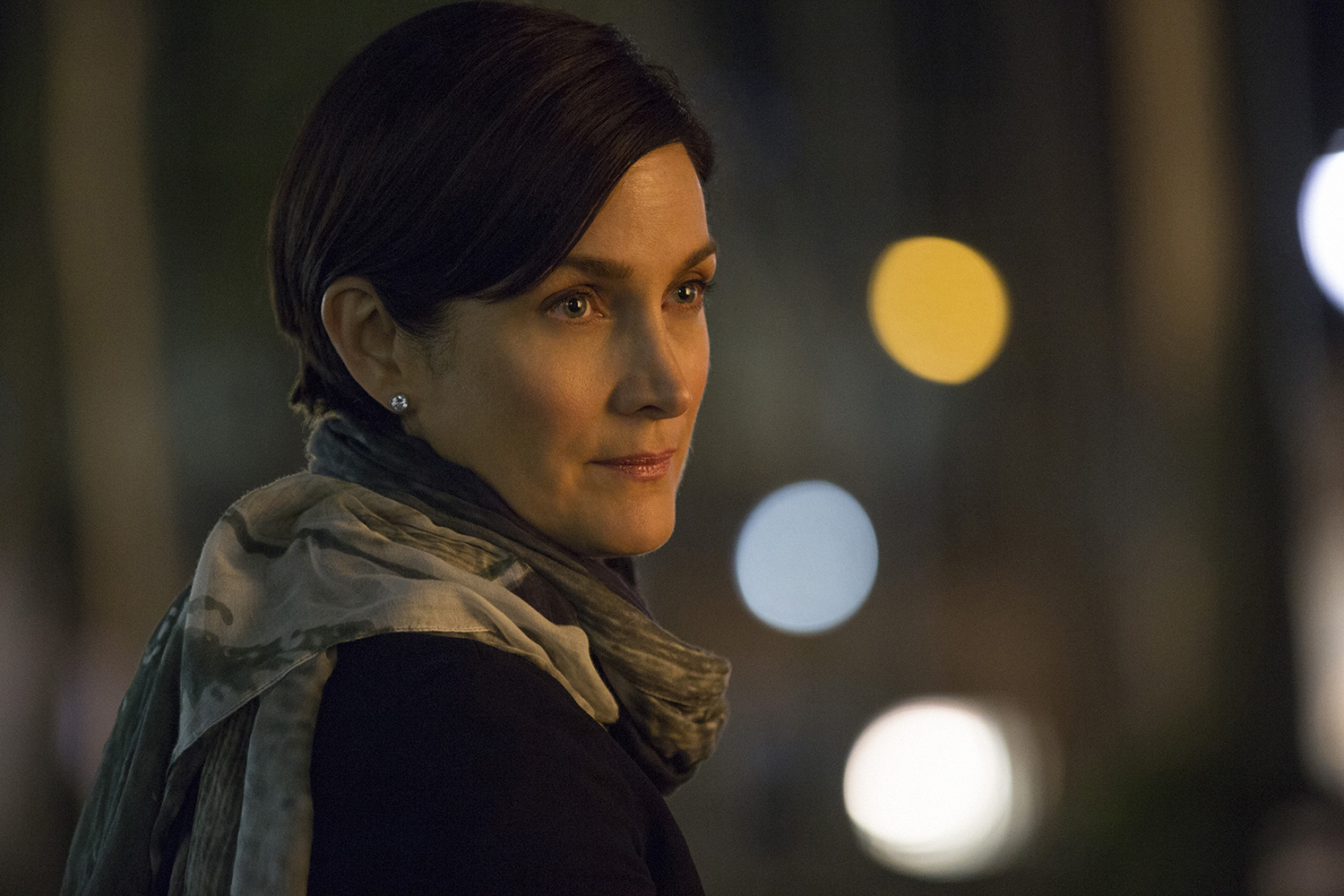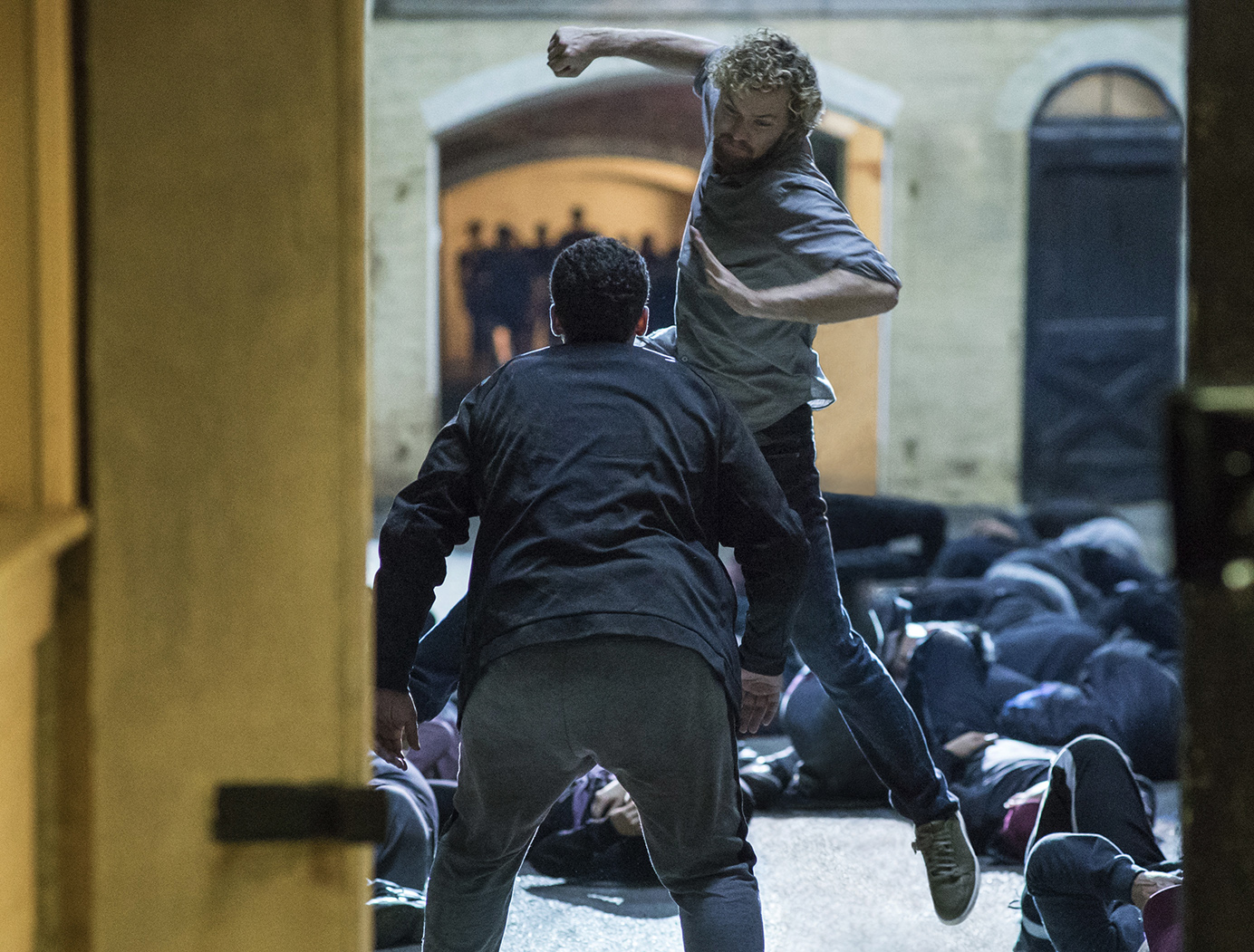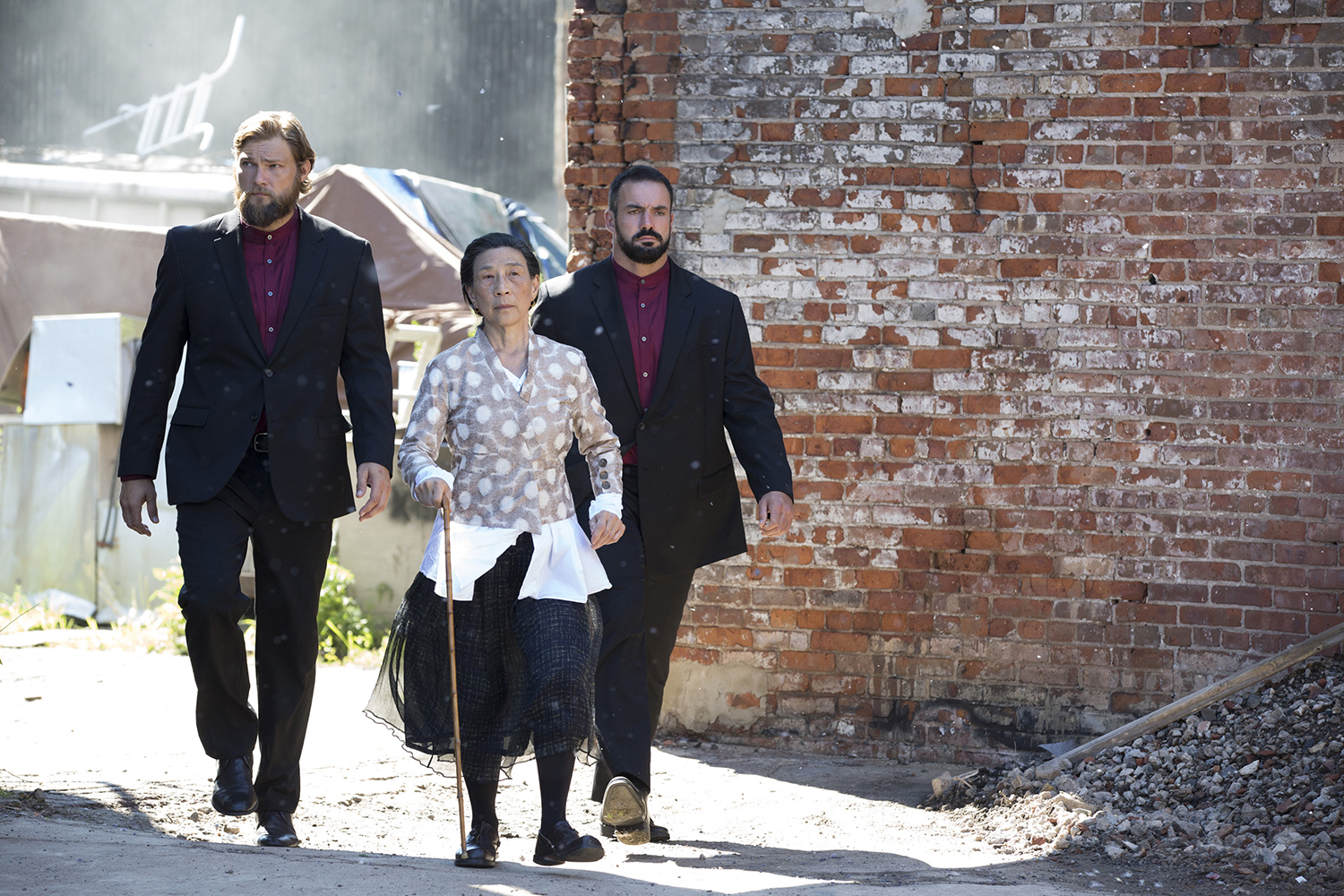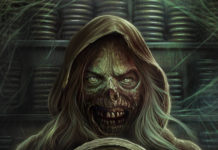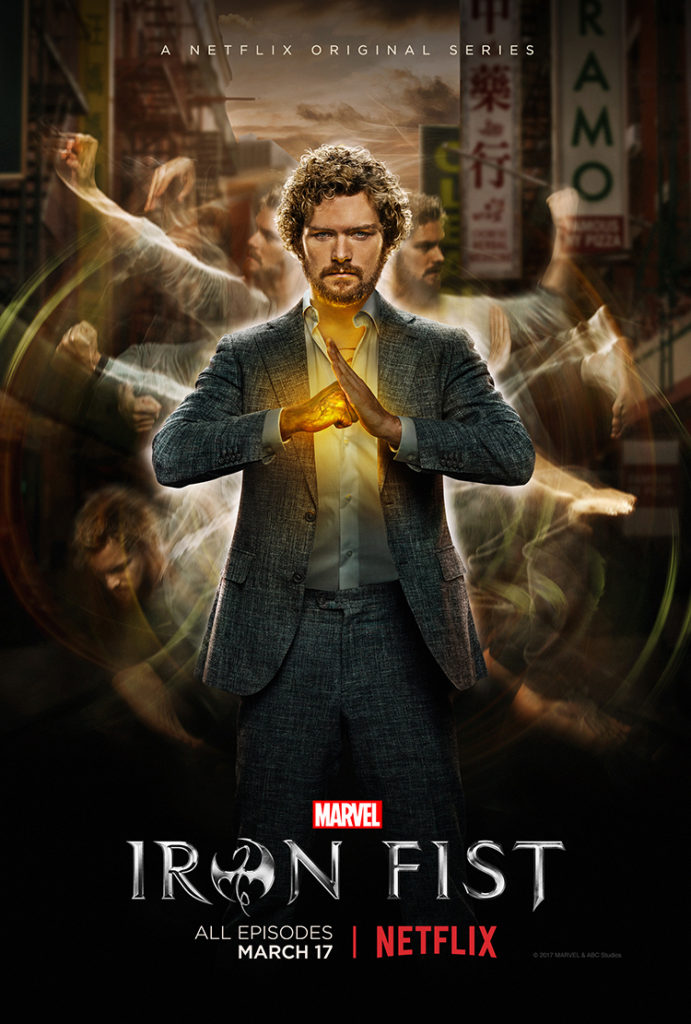
Warning: This review contains spoilers!
I watched all thirteen episodes of Marvel’s Iron Fist on Netflix last week and was convinced I didn’t pay my internet bill, as my connection seemed unusually sluggish. Turns out it was the snail-on-valium-pace of the series.
Since its release on the streaming site, Iron Fist has taken a severe and consistent beating from fans and critics alike. It’s not as bad as the 18% approval rating on Rotten Tomatoes, though the fourth series following Daredevil, Jessica Jones, and Luke Cage had high expectations that never get the chance to meet them due to a blandly mediocre plot.
In truth, Iron Fist is not as bad as most people say it is, but it isn’t Daredevil Season One, which put everyone on notice something wicked this way came, with some serious fight scenes that have only been bettered on Into the Badlands.
Sorry, Iron Fist, but the producers missed the mark in insisting the series be too grounded. Having opened the “Far out, Man” door in Doctor Strange, and considering the supernatural origins of the other characters who will unite in The Defenders, it would not have been anywhere near egregious to give Iron Fist a much needed shot of vitamin mysticism. K’un-Lun is as much a part of the story as Rand Enterprises in New York.
Comix Asylum regular Marcus Clarke and I discussed this over a few Labatt 50’s, and he would’ve liked to have seen a flashback/present time narrative exposing Daniel Rand’s reasons for leaving K’un-Lun and his battles adjusting to the new world. “Showing him as a badass in K’un-Lun would be a great contrast to his uneasiness and difficult adjustment coming back to civilization,” said Clarke.
And I agree with him. I would have been happy with a flashback origin story that we saw in Daredevil, which played itself out in season one under the radar; it didn’t impede the action in the present but filled in the necessary details as it helped push the story forward. This contributes to some of the show’s problems; in soft-pedalling the supernatural element, we lose out on what makes Iron Fist the Iron Fist. As is, Rand’s origin story is drawn out almost reluctantly, and there are no scenes at all in the mystical realm of K’un-Lun. At the very least show some more of his training at various ages in flashback, like Caine in Kung-Fu.
“The series should have opened with the plane crash and Rand waking out of a nightmare in the park as a homeless dude,” said Clarke. “Then it could have gone straight into the first scene they had. It shows he’s still haunted by what happened but his training has helped him recover even though the scars are still under the skin.”
What we do get is Rand in present-day New York, trying to regain control of his father’s company. He’s barefoot and sprouting Zen quotes for every situation, which does not help the criticism of “whitewashing”, especially when the appropriation of Asian narratives and roles are a hot button topic right now. I was annoyed with Rand’s hipster hobo look, and didn’t need to watch him trying to convince people of who he is over four episodes. Part of that is the writing, but part of it is attributed to Finn Jones’ portrayal, which I disappointingly found him too young, naïve and optimistic for the character of Iron Fist, especially when he insists on being called ‘Danny’ rather than ‘Daniel’.
Clarke, however, liked Jones, and tried to slap some sense into me. “In the comics K’un-Lun reappears every ten years not fifteen and Rand left when he was nineteen or twenty,” Clarke said. “He’s twenty five on the show and is essentially in year one as Iron Fist. His naiveté makes sense. Remember that our (comic book) Iron Fist is essentially Chuck Norris. The TV version was also like Hamlet – all whiny and indecisive.”
Alas, poor Yorick, Rand needs more beard if he’s going to be Chuck; a lot more beard! I also think Jones’ physique needed to be somewhat more superhero like; not that he needed to be an over muscled caricature, but Bruce Lee proved one could be lean, wiry, and muscular and still pack a lot of power in his punches and kicks.
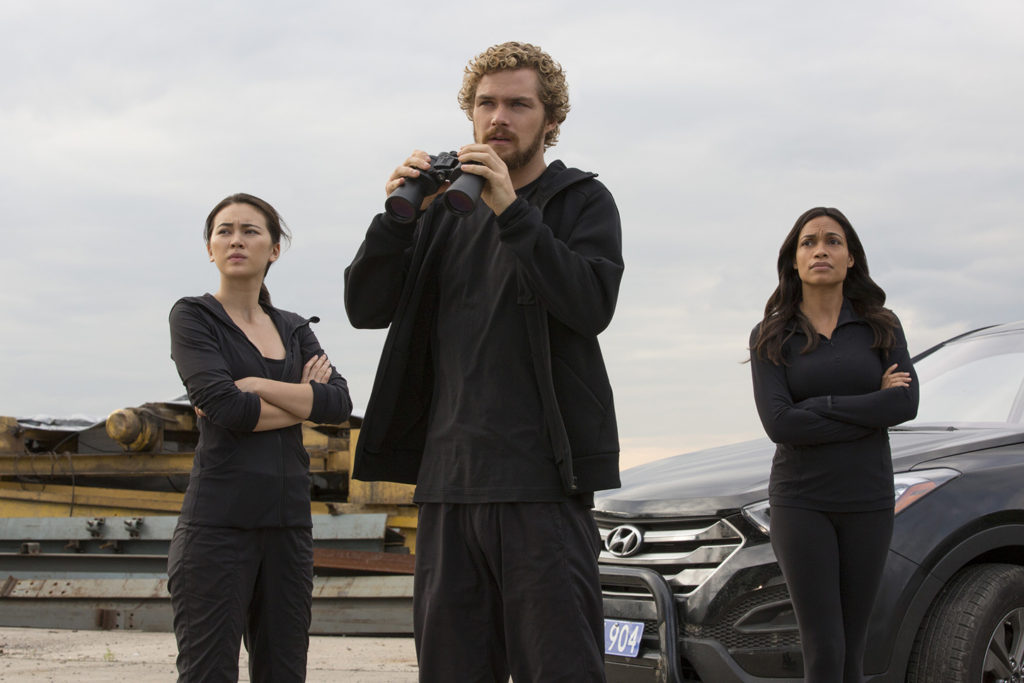
That said. I found the rest of the cast great, each punching above their respective weight classes given the material they had to work with. Returnees Rosario Dawson and Carrie-Ann Moss complete the quadrumvirate in appearing in all the Marvel TV shows that will lead into The Defenders. No word as of yet if they will be in the spinoff series of The Punisher.
I guess I was expecting an older, more serious Iron Fist considering Daredevil, Jones and Cage were serious. And I think Rand could have met Luke Cage in this season to prepare for The Defenders; precedent has been set with crossover characters, most notably Luke Cage appearing in Jessica Jones. “I got to thinking that they went this way for The Defenders so that they can have the tropes of a quartet,” Clarke reminds me. “Grizzled alpha, optimistic kid, easy going dude and wild card. You can guess which heroes fit which trope.”
That was too easy, like a floater right over the plate. Murdock is grizzled, Rand the kid, Cage easy going and Jessica Jones as the wild card.
“That’s why we work well together,” Clarke laughs. “Older Iron Fist would be too much like Daredevil but calmer, a mix of Daredevil and Cage. It would make the dynamics too even but I think they should have gone the other way and treated it like a western where the players are similar but are defined by their skill set.”
Just like Clint Eastwood, Eli Wallach, and Lee van Cleef in The Good, the Bad, and the Ugly, I suggest. “Exactly!” says Clarke.
Iron Fist is Marvel’s first misstep since launching the MCU in television and film. Marvel TV executive Jeph Loeb said in an interview with Comic Book Resources that the series would examine New York’s high-end financial world, “the One Percent of the One Percent and how that affects our world on a day-to-day basis… high-level corporation, Big Pharma, things like that”. In addition, Jones said the series would examine “corporate corruption and corporate responsibility in the modern world, and… [h]ow much do corporations have impact on society? And what we actually look at in the show is the heroin epidemic of the city, and how corporations maybe actually fund the heroin epidemic, and what that means to society.” The problem is there isn’t enough compelling to cover thirteen episodes. Perhaps the parallel flashback origin story would have helped with what seems to be a lot of padding in season one.
For Marvel’s first real foray into martial arts, the fights were rather underwhelming. I know this to be an unfortunate fact when, watching the fight between Colleen and Bakuto in the rain, Marcus reminded me that the location was the same setting as the end of John Wick: Chapter 2. One shouldn’t be taken out of the story or the action so easily. Daredevil set a really high bar that Iron Fist should have curbstomped, but sadly didn’t. For the best martial arts fights, watch any episode of Into the Badlands.
The upside to all of this is Marvel has implied there is room in the MCU films for the Defenders and the actors playing them. “That would be very cool,” says Clarke. “Having Daredevil show up in a Spidey film to lend legal advice would be a great nod to the comics.”


